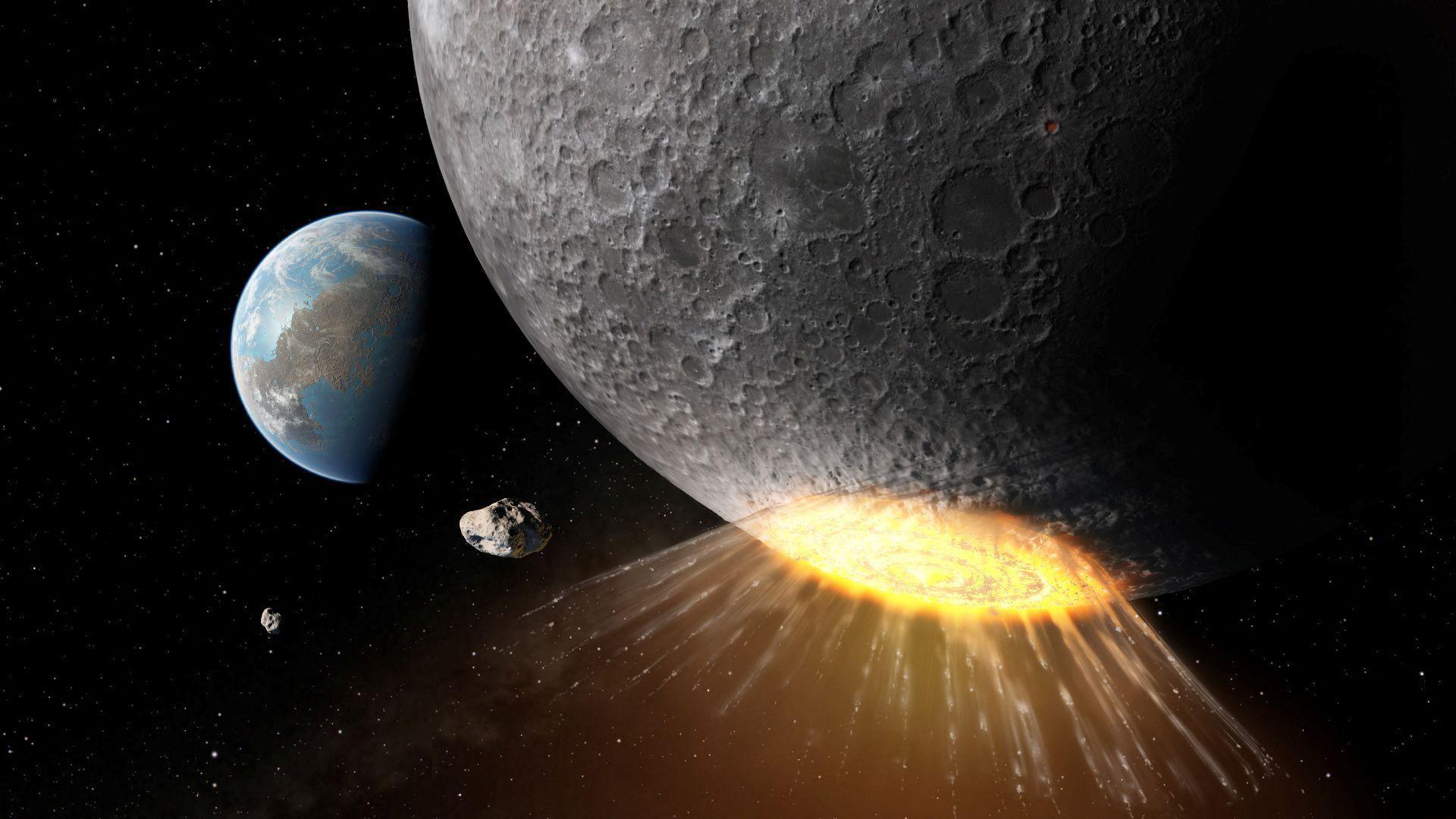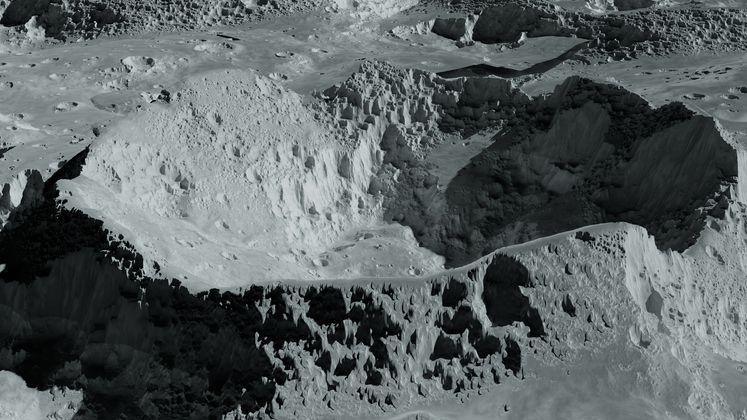Asteroid collision formed huge craters on Moon within minutes

- Published
A new study by scientists suggests that an asteroid impact on the Moon blasted two huge craters within a matter of minutes.
Located close to the Moon's south pole, their sizes have been compared with that of the Grand Canyon in the US state of Arizona.
However, unlike Earth's natural wonder, which was carved through millions of years of erosion - the two lunar craters are thought to have taken just ten minutes to form.
Scientists think they were dug out by rocky debris after the surface was struck around 3.8 billion years ago.
More space news
- Published30 January
- Published2 days ago
- Published29 January
What did scientists discover on the Moon?

The two craters - called Vallis Schrödinger and Vallis Planck - are hidden on the far side of the Moon, the side which always faces away from Earth.
They are near the lunar south pole, which is where Nasa plans to land astronauts during the Artemis III mission.
Vallis Schrödinger is around 270 km long and 2.7km deep, while Vallis Planck is a similar length and 3.5km deep.
An international group of scientists used images and data of the area, captured by Nasa's Lunar Reconnaissance Orbiter to draw up maps of the region, and work out the speed and size of the material that hit the moon 3.8 billion years ago.
They calculated that debris travelled at speeds of around 1 kilometre per second and that the biggest chunks were 3.2 miles wide.
Researchers say that the information they've gathered could help decide where samples from the lunar surface will be taken during the next human and robot-crewed missions to the Moon.
